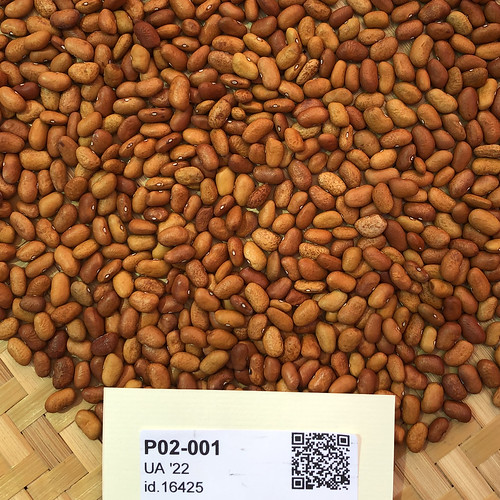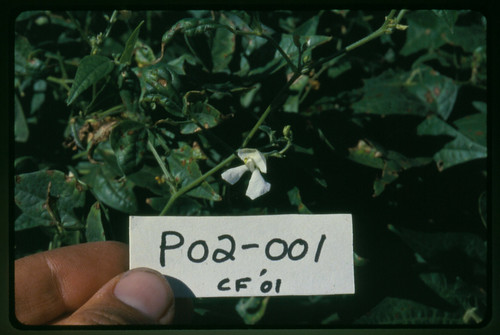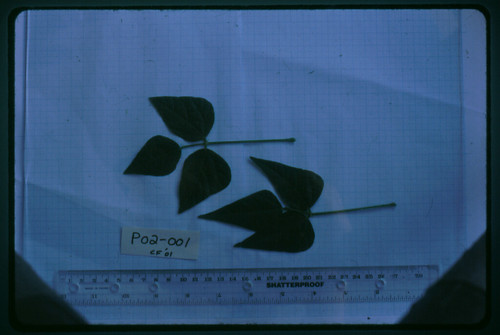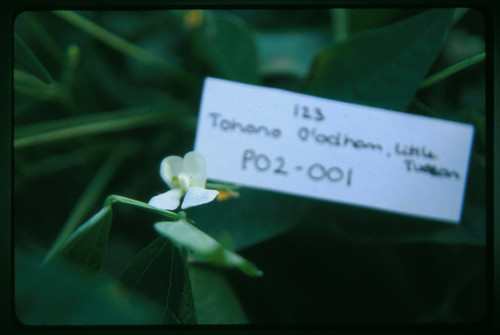ADAPTS
the Adaptive Drylands Agriculture Portal for The Southwest
P02-001
Collection | Availability | Map | Climate | Photographs | Observations | Cultivation & Seed Saving | Feedback
Basic Collection Information and Status
Tepary Bean (Phaseolus acutifolius, Fabaceae)
Cultural Affiliation Tohono O'odhamCollection Site Arizona, United States (latitude: 31°; altitude: 1,800 ft / 500 m)
Collection Year 1979
Accession Status Active
Catalog Information and Instructions
S'oam Pawi - Ali Chukson PT117
"Little Tucson Brown." Very round, burnt-orange seeds from the Tohono O'odham reservation, Arizona. Early-maturing and very productive!
Current availability of this variety is summarized below. We encourage the use of these seeds to benefit humanity and strive to facilitate access through a number of channels.
Online Order Native American Free Seed Community Seed Grants Bulk Seed Exchange ? Contact us for current availability.
Academic Researchers ? If you are an academic researcher with an interest in this accession, please get in touch with us. We encourage use of the seeds for appropriate research applications and are committed to protecting the rights of the people and cultures who developed and maintained this diversity and to its continued availability.
Collection Site
The circle in the map below shows the area where this accession was collected (why isn't the precise locality shown
?Precise collection localities are hidden in order to protect the privacy of the original donors of the seeds in the NS/S collection.
). You have not specified a reference site, but you may specify one and rerun your search.The graphs below summarize aspects of the climate for this accession's collection site. You have not specified a reference site, but you may specify one and rerun your search.
Photographs
The Native Seeds/SEARCH digital photo collection for this accession is provided below.
image hosting provided by Flickr — all photos © Native Seeds/SEARCH — please contact us for permission to useCharacterization and Evaluation
The table below lists observations of this accession's characteristics (why are characters sometimes listed more than once
?For some accessions, observations of a particular trait have been recorded over more than one season or location; these are indicated by the different values in the Lot column.
).| Character | Observation | Lot, Frequency and Comments | Character Description (Source and Code) |
|---|---|---|---|
| 100 seed weight (primary) | 17.04 g | lot: CF '01 | |
| corolla color | White | lot: CF '01 | Wings and standard: recorded at full blossom at about 8.00 - 10.00 h (Bioversity 4.2.1: 1) |
| days to 50% flower | 51 | lot: CF '01 | |
| days to first flower | 47 | lot: CF '01 | |
| days to major harvest | 118 | lot: CF '01 | |
| leaflet shape | Ovate-lanceolate | lot: CF '01 | Measured on the terminal leaflet of the third trifoliate leaf, to obtain a ratio between the length (l) and width (w). Treat shallowly lobed leaflets as a separate category. (Bioversity 4.1.1: 2) |
| mature pod color | Tan with black spots | lot: CF '01 | (Bioversity 4.2.2: 2 w/ black spots) |
| note | Medium sized very round dark orange, from solid to speckled tan. | lot: CF '01 | |
| number of seeds per pod | 4 | lot: CF '01 | Mean of 20 randomly chosen pods from same plant (Bioversity 4.3.8) |
| ovules/pod | 5.4 | lot: CF '01 | Number of ovules from longest pod of 10 random normal plants (Bioversity 4.2.5) |
| plant type | Indeterminate bush with erect branches | lot: CF '01 | (Bioversity 4.1.2: 2) |
| pod curvature | Moderately curved | lot: CF '01 | Of fully expanded immature pod (Bioversity 4.2.3: 6) |
| pod dehiscence | Moderate shattering and dehiscence | lot: CF '01 | For the majority of 20 randomly sampled pods at dry maturity (Bioversity 4.2.4: 6) |
| pod shattering in the field | Present | lot: CF '01 | (Bioversity 6.2.10: +) |
| relative abundance (primary) | 1 | lot: CF '01 | |
| seed coat pattern (primary) | Mottle present, mottle absent | lot: CF '01 | (Bioversity 4.3.2: +,0) |
| seed color (primary) | Brown to red-brown | lot: CF '01 | If mottled, the dark background colour (Bioversity 4.3.1: 6) |
| seed pattern color (primary) | Ash gray | lot: CF '01 | Color of mottle (Bioversity 4.3.3: 2) |
| seed shape (primary) | Round oval | lot: CF '01 | Taken from middle of pod. (Bioversity 4.3.5: 2) |
| terminal leaflet length | Moderately short (4-8 cm) cm | lot: CF '01 | Recorded for terminal leaflet of third trifoliate leaf, from pulvinus to leaf tip (Bioversity 6.1.4: 4) |
| terminal leaflet width | Medium (3.3-3.7 cm) cm | lot: CF '01 | Recorded for terminal leaflet of third trifoliate leaf (Bioversity 6.1.5: 5) |
| Tepary Bean Introduction | Cultivation Instructions | Seed Saving Instructions |
|---|---|---|
| Cultivated in the Southwest for millenia, teparies mature quickly and are tolerant of the low desert heat, drought and alkaline soils. | Plant seeds 1/2" deep and 4" apart with the summer rains. If rains are sparse, irrigate when plants look stressed. They do not tolerate overwatering. Teparies may carry bean mosaic virus, do not plant near other types of beans. | A self-pollinating annual. Harvest pods as they dry. Be careful: mature pods will pop open and drop seeds if left on the plant. An alternative is to harvest the whole plants when pods are turning brown, allow them to dry on a sheet, then thresh and winnow seeds. |
If you have questions or feedback about this accession or the ADAPTS platform in general, please contact us.




